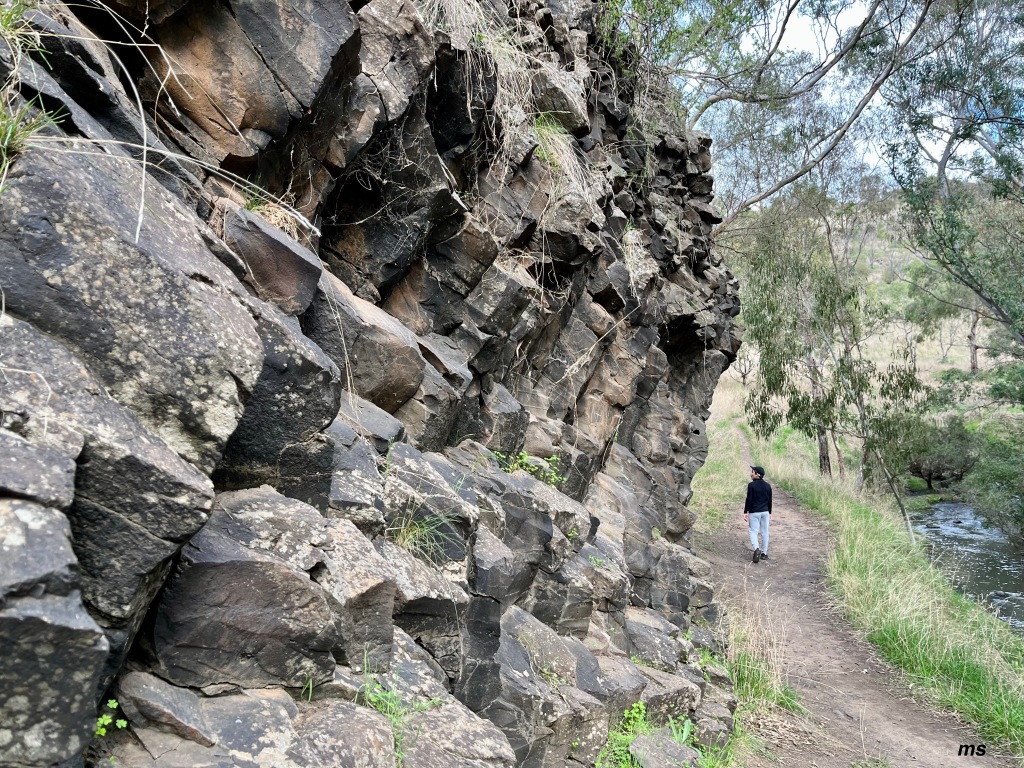Just half an hour’s drive from Melbourne, was Organ Pipes National Park. Originally the Kurnung William Balluck people found food in this region before the land was taken over by European farmers. In 1972, the small park was designated as a national park because of the unique rock formations caused by ancient lava flows. Because of farming, native species had been destroyed and the area was covered in weeds and rabbits. It was returned to its natural state due to volunteers who planted native trees, shrubs and grasses. With this revitalization, kangaroo, wallabies, echidna, frogs and snakes returned.

On my most recent visit to Melbourne, we descended the path, a short distance to Jacksons Creek. On the opposite bank was Organ Pipes. A million years ago, molten lava flowed over the Keilor Plain from Mt Holden into gullies and valleys where it cooled into basalt. While cooling, it shrank and cracked into a hexagonal pattern. The cracks lengthened and more lava flows covered the pipes. Erosion caused by Jacksons Creek cut down into the basalt and sedimentary rocks revealing the unique rock formation.

Before we returned to the car park, we veered close to Jacksons Creek to see Rosette Rock—a giant pitted rock. Further on, was Tessellated Pavement. At the start of this section, it appeared as if a formation like the Organ Pipes had been sliced off at ground level leaving hundreds of steppingstones. We walked over these stones to a basalt wall that appeared as if the lava had bubbled before it cooled and set.

This was a beautiful setting but due to its proximity to Melbourne Airport, every few minutes the groan of an ascending aircraft reminded us that we were not far from the encroaching city limits.


